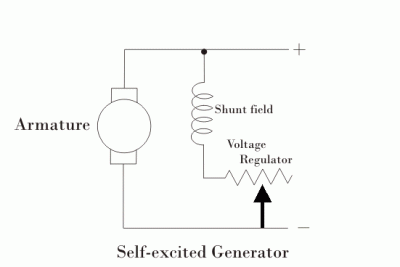
Capsids: Unraveling the Structure of Viral Architecture

In the intricate world of virology, **capsids** play a fundamental role in the architecture of viruses. A **capsid** is a protein shell that encases and protects the viral genetic material, which can be either DNA or RNA. This defensive structure is essential for a virus's survival and effectiveness, as it not only safeguards the **nucleic acid** from environmental threats but also facilitates the delivery of genetic material into host cells during the infection process. As scientists continue to delve into the mysteries of viral architecture, understanding the composition and diversity of **capsids** opens up new avenues in virology, particularly concerning disease control and prevention.
Viral **capsids** exhibit remarkable complexity and diversity, reflecting the evolution and adaptations of viruses to their environments. From simplistic helical formations to more intricate icosahedral designs, the structure of a **capsid** can greatly influence a virus's infectivity and pathogenicity. The exploration of capsid structures not only aids in our comprehension of viral life cycles but also emphasizes the potential for developing antiviral strategies and therapeutic interventions. As we unravel the components and functions of **capsids**, we pave the way for groundbreaking advancements in molecular biology and medicine.
- Understanding Capsids: The Viral Shield
- The Structure of Capsids: Composition and Architecture
- Types of Capsids: Icosahedral, Helical, and Complex Forms
- The Role of Capsids in Viral Function and Infection
- Capsids and Their Relationship with Viral Nucleic Acid
- Enzymatic Proteins in Capsid Structure: Beyond Protection
- Comparing Capsids to Viroids: Key Differences
- Significance of Capsid Research in Virology
- Future Directions in Capsid Studies and Viral Architecture
The **capsid** serves as the first line of defense for a virus, acting as a protective shield that encases its **nucleic acid**. This protective role is crucial, as viral genomes are vulnerable to degradation from environmental factors and enzymes in host organisms. The **capsid** ensures that the nucleic acid remains intact until the virus enters a suitable host, where it can initiate the infection process. Furthermore, the properties of a **capsid**, such as stability and resilience, are vital for a virus's survival outside a host organism.
In addition to protecting the viral genetic material, **capsids** play a significant role in the virus's ability to infect host cells. The outer structure is often equipped with proteins that enable the virus to attach to host cell receptors, facilitating entry. These surface proteins can vary greatly between different types of viruses, leading to differing levels of infectivity and tissue tropism. Therefore, the study of **capsids** is not just about understanding their protective role but also about deciphering their contributions to the viral life cycle and pathogenesis.
The Structure of Capsids: Composition and Architecture
The **capsid** is fundamentally composed of protein subunits known as **capsomers**. These **capsomers** assemble in a precise manner to form the overall structure of the **capsid**. The arrangement and interaction of these proteins determine the shape and stability of the **capsid**, which can greatly differ among viral families. The basic architectural designs include crystalline arrangements that form icosahedral or helical shapes. The intrinsic property of symmetry in these structures allows efficient packaging of the viral genome with minimal material.
The primary proteins that constitute a **capsid** can be classified into two categories: structural and non-structural proteins. Structural proteins are responsible for forming the **capsid**, while non-structural proteins might be involved in regulating the assembly of the **capsid**, or aiding in the viral life cycle after infection. Furthermore, the properties of the **capsid**, such as its size and surface charge, can influence how effectively a virus infects host cells.
Types of Capsids: Icosahedral, Helical, and Complex Forms
Viral **capsids** can be categorized into three primary types based on their geometry: **icosahedral**, helical, and complex forms. Each type serves distinct functions and reflects evolutionary strategies of different virus families.
Icosahedral Capsids
The **icosahedral capsid** is one of the most commonly observed structures in the viral world. Characterized by its geometric shape featuring twenty equilateral triangular faces, it provides a robust framework that efficiently encases the viral **nucleic acid**. Viruses with **icosahedral capsids**, such as adenoviruses and picornaviruses, often exhibit high symmetry, imparting thermal stability conducive for their survival in various environments. The arrangement of **capsomers** in **icosahedral capsids** allows for the encapsulation of larger genomes and also aids in the development of neutralizing antibodies by eliciting a strong immune response.
Helical Capsids
On the other hand, **helical capsids** are characterized by their elongated shapes, resembling a spiral staircase or a hollow cylinder. These **capsids** are formed by the coiling of **capsomer** proteins around the viral **nucleic acid**. Examples include viruses such as the tobacco mosaic virus and the rabies virus. The **helical structure** allows for an efficient way to encapsulate the viral genome, making this type of **capsid** essential for viruses with substantial nucleic acid length. Moreover, the flexibility of **helical capsids** often contributes to the virus's ability to adapt and thrive in various environments.
Complex Capsids
Finally, complex capsids represent a blend of both **icosahedral** and **helical** features, resulting in diverse architectures that are observed in many bacterial and animal viruses. An example of a virus with a **complex capsid** is the bacteriophage, which not only has a **capsid** to hold its genetic material but also possesses additional structures, such as a tail and base plate, essential for bacterial infection. This complexity often corresponds to enhanced mechanisms for host recognition and infection.
The role of the **capsid** extends beyond mere protection; it is integral to the virus's functionality and infective capabilities. When a virus encounters a susceptible host cell, it must successfully navigate the entry process, which is highly dependent on the structural features of the **capsid**. Specialized proteins embedded in the **capsid** facilitate binding to specific receptors on the host cell surface, a critical step for viral penetration.
Once attached, the **capsid** undergoes conformational changes, enabling the release of the viral **nucleic acid** into the host cell's cytoplasm. This process, known as uncoating, is pivotal for the virus's lifecycle, as it allows the viral genome to hijack the cellular machinery for replication and assembly. The careful design of the **capsid** ensures not only the protection of viral content but also the effective execution of viral entry and replication.
The relationship between **capsids** and viral **nucleic acid** is symbiotic; the **capsid** protects and transports, while the **nucleic acid** provides the genetic blueprint essential for viral replication. Different types of viruses possess distinct **capsid**-**nucleic acid** relationships, reflecting their evolutionary adaptations. For instance, enveloped viruses, which have additional lipid layers around their **capsids**, often exhibit varied mechanisms of entry compared to non-enveloped viruses, which rely solely on their **capsids** for cell infection.
Moreover, the interaction between the **capsid** and the **nucleic acid** influences how viruses replicate within host cells. The structural characteristics of the **capsid** can determine the method of viral assembly and the formation of new viral particles. A deeper understanding of this interplay offers significant insights into viral pathogenesis and provides potential targets for antiviral therapeutics.
Enzymatic Proteins in Capsid Structure: Beyond Protection
In addition to providing a protective casing for viral **nucleic acid**, **capsids** may also incorporate enzymatic proteins that facilitate critical functions during the viral life cycle. These proteins can play various roles, including assisting in the release of genetic material and catalyzing essential biochemical reactions within the host. For example, some viruses possess **capsids** integrated with polymerases or proteases, which are vital for synthesizing viral RNA or processing viral proteins post-translation.
The presence of these enzymatic proteins underscores the functional versatility of **capsids**. By collaborating with nucleic acids and host cellular components, these proteins help viruses efficiently replicate and spread. This aspect of **capsid** function is an exciting area for ongoing research, as inhibiting these enzymatic activities could serve as a strategic antiviral measure.
Comparing Capsids to Viroids: Key Differences
While both **capsids** and viroids represent unique forms of viral entities, they are fundamentally different in structure and composition. Viroids are simple, **viruslike** agents composed solely of **nucleic acid** without the protective protein coat characteristic of **capsids**. Not only do viroids lack structural proteins, but they also typically replicate within host cells, utilizing host machinery without encoding any proteins of their own. This distinction highlights the evolutionary gap between traditional viruses with **capsids** and viroids with their minimalist genetic architecture.
Understanding these differences is critical in virology, particularly when designing targeted treatments and preventive measures. While virulent viruses utilize **capsids** for protection and infection, viroids rely on their ability to hijack host cellular processes to thrive. This knowledge enhances our comprehension of viral diversity and pathogenicity.
Significance of Capsid Research in Virology
The investigation of **capsids** holds considerable significance in the field of virology and related disciplines. By unraveling the structural complexities of **capsids**, researchers can unveil the underlying mechanisms of virus infection and transmission. This foundational knowledge is pivotal for creating effective vaccines, antiviral drugs, and therapeutic strategies.
Moreover, advances in imaging technologies and molecular biology techniques have enabled scientists to visualize and analyze **capsid** structures at an unprecedented resolution. This progress not only furthers our understanding of viral mechanisms but also propels the development of novel biotechnological applications, including gene delivery systems and nanotechnology. As research continues to expand, the implications of **capsid** studies will resonate in both virology and broader biomedical contexts.
Looking ahead, the future of **capsid** studies appears promising as researchers explore innovative techniques in structural biology and biophysics. Among the exciting prospects is the potential to engineer **capsids** with tailored functionalities for therapeutic applications, such as targeted delivery of drugs or genetic materials. The development of virus-like particles (VLPs) offers a compelling synergy between **capsid** architecture and advanced biotechnological applications.
Furthermore, as our understanding of **capsid** structures deepens, we can expect to observe novel viral strains and their implications on global health. Keeping pace with emerging viruses demands continuous research into **capsids** and their interactions with host systems. By fostering collaboration across various scientific disciplines, we can better predict viral behavior, develop robust interventions, and ultimately safeguard public health.
In conclusion, the exploration of **capsids** reveals the sophisticated architectural strategies employed by viruses to ensure their survival and success. By continuing to investigate these essential structures, we pave the way for breakthroughs in virology, medicine, and biotechnology, contributing to a more profound understanding of the viral world and its impact on health.
Did you find this article helpful? Capsids: Unraveling the Structure of Viral Architecture See more here Education.
Leave a Reply






Related posts